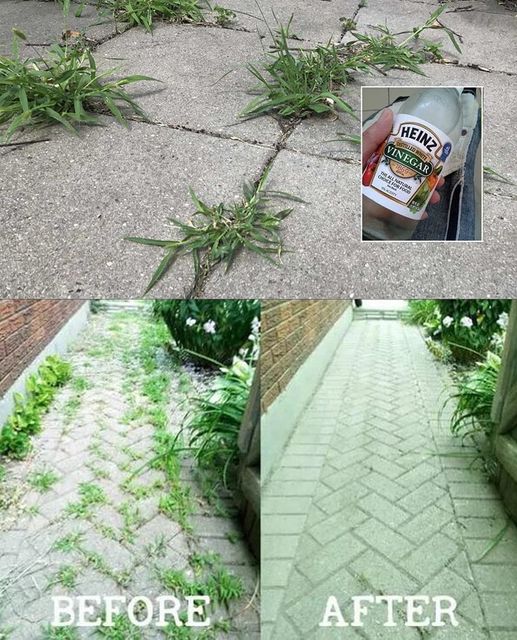Weed control is a critical consideration when setting up or rejuvenating your patio space. Weeds are tenacious, exploiting every opportunity to take root.
However, fear not, as you are not without means to combat these unwelcome visitors.
The most efficient strategy to handle weeds is to stop them from sprouting initially. However, if weeds have already made an appearance on your patio, several measures can effectively clear them out.
Combatting Patio Weeds: Strategies for a Pristine Outdoor Space
Weeds have the knack for infiltrating the tiniest of gaps in patios, but preventative actions can significantly reduce this risk. Correctly laid pavers make it tough for weeds to break through the crevices.
Nevertheless, over time, joint sand can loosen, and materials like concrete, gravel, and wood may develop fissures, all of which can invite weeds.
Regularly sweeping and tending to your patio can thwart the settlement of seeds in paver interstices or crack
Tactic #1: Baking Soda
Baking soda is a household staple that could be your ally against weeds. Its natural composition ensures it’s eco-friendly and won’t harm your property or greenery.
By inducing a salt overload, baking soda desiccates the weeds right down to their roots, causing them to perish.
Dampen the weeds with water, then sprinkle baking soda liberally on them. For paved or cracked concrete patios, scatter baking soda across and broom it into the crevices, reapplying every month or so. This is especially effective in the milder seasons but can also be employed in summer.
Another pantry staple, vinegar, acts swiftly due to its acetic acid content, dehydrating and killing plants within a day. However, it’s non-selective and may damage desirable plants as well.
When using vinegar, it’s prudent to apply it carefully, ideally with a spray bottle, ensuring it only contacts the weeds.
For enhanced efficacy, create a solution of vinegar, salt, and dish soap, and apply it to the weeds and patio cracks. The salt aids in preventing regrowth.
Tactic #3: Salt Solution
Salt, a natural desiccant, is effective in a 3-to-1 water mix. Apply cautiously, as it can kill other plants too.
Applying this mix to cracks can also forestall new weed growth. Similar to baking soda and vinegar, salt’s drying effect has lasting results.
Tactic #4: Pressure Washing
Physical weed removal followed by pressure washing can cleanse the pavers of roots and debris. Extract large weeds by hand before pressure washing the area to avoid dislodging the foundational layer.
For paver patios, post-pressure washing, apply polymeric or sweeping sand to hinder future weeds. Always test the pressure washer on a small area first.
Tactic #5: Chemical Herbicides
Chemical solutions are also available, with pre-emergent and post-emergent options. Pre-emergents disrupt seed germination, while post-emergents are for active weeds, with selective types sparing other plants.
Preventive Measures for a Weedless Patio
Regular applications of baking soda, vinegar, and herbicides can keep your patio weed-free. Polymeric sand, a specialized mixture, solidifies to seal paver joints, enhancing patio durability and preventing weed encroachment.
Employing these methods from the onset when laying pavers sets the stage for a long-term, weed-resistant patio.
Be proactive and adopt these tactics to ensure your patio remains an inviting, weed-free retreat.
